Themed collection Emerging Investigator Series

Global opportunities and challenges on net-zero CO2 emissions towards a sustainable future
Artistic representation of CO2 emissions from various sources into the atmosphere, and its consequence on the global climatic conditions.
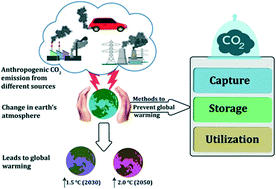
React. Chem. Eng., 2021,6, 2226-2247
https://doi.org/10.1039/D1RE00233C
State-of-the-art and challenges towards a Molecular Solar Thermal (MOST) energy storage device
In this minireview, the recent advances and limitations of MOlecular Solar Thermal (MOST) energy storage technology are discussed, including a discussion of the photoisomerization and the catalytic back-conversion reactions.

React. Chem. Eng., 2024,9, 1629-1640
https://doi.org/10.1039/D4RE00131A
Controlling lattice oxygen activity of oxygen carrier materials by design: a review and perspective
The lattice oxygen activity of oxygen carriers is critical to chemical looping processes and can be effectively controlled with prepared (i) solid solution mixtures, (ii) ternary oxide phases or (iii) core–shell structured oxygen carriers.

React. Chem. Eng., 2021,6, 1527-1537
https://doi.org/10.1039/D1RE00209K
Advances in metal/zeolite catalysts for C1–C8 alkane dehydroaromatization
The development of metal/zeolite catalysts for C1–C8 alkane dehydroaromatization was reviewed. The outlook for the design of metal/zeolite catalysts for alkane dehydroaromatization and deep understanding of the reaction mechanism were proposed.

React. Chem. Eng., 2025,10, 733-749
https://doi.org/10.1039/D4RE00538D
Towards continuous flow manufacturing of active pharmaceutical ingredients in Africa: a perspective
Building start-of-the-art, sustainable and competitive local API manufacturing in Africa using continuous flow technology.

React. Chem. Eng., 2024,9, 2532-2551
https://doi.org/10.1039/D4RE00299G
Recent progress in the development of catalysts for propane dehydrogenation in the presence of CO2
Propane dehydrogenation (PDH) has become an important strategy to address the ever-increasing global demand for propene.

React. Chem. Eng., 2024,9, 1292-1312
https://doi.org/10.1039/D4RE00064A
Digital Pareto-front mapping of homogeneous catalytic reactions
We present a digital framework for rapid multi-objective reaction space exploration and optimization of homogeneous catalytic reactions through autonomous experimentation and Bayesian optimization.
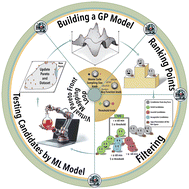
React. Chem. Eng., 2024,9, 787-794
https://doi.org/10.1039/D3RE00673E
Development of an open-source flow-through cyclic voltammetry cell for real-time inline reaction analytics
A low volume flow-through cyclic voltammetry cell design that can be readily constructed from commercial fluidic components enables rapid inline monitoring of redox active species.

React. Chem. Eng., 2024,9, 26-30
https://doi.org/10.1039/D3RE00535F
Boosting the catalytic performance of a marine yeast in a SpinChem® reactor for the synthesis of perillyl alcohol
A sustainable approach for the reduction of perillaldehyde to perillyl alcohol (POH) through alginate immobilized yeast cell beads has been here developed.

React. Chem. Eng., 2023,8, 2963-2966
https://doi.org/10.1039/D3RE00474K
Copper-catalyzed redox-neutral regioselective chlorosulfonylation of vinylarenes
A simple Cu(OTf)2-catalyzed alkene chlorosulfonylation reaction is developed.
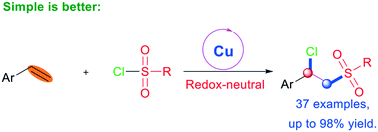
React. Chem. Eng., 2021,6, 1376-1380
https://doi.org/10.1039/D1RE00188D
Combining radial and continuous flow synthesis to optimize and scale-up the production of medicines
Rapid, standardized process optimization and development on a radial synthesizer can be directly converted to a dedicated continuous flow process for scale-up, shown for three APIs via single- and multistep syntheses and continuous crystallization.

React. Chem. Eng., 2021,6, 220-224
https://doi.org/10.1039/D0RE00445F
Optimization of nonthermal plasma (NTP) catalytic CO2 methanation: effect of the excitation waveform, pellet size and residence time
This study demonstrates the advantages of the multi-pulse waveform of minimizing capacitive losses, delivering higher energy per discharge event, which mitigate the effect incurred by changing the pellet size and residence time.

React. Chem. Eng., 2025,10, 2525-2535
https://doi.org/10.1039/D4RE00628C
Microcrystalline cellulose-based, nitrogen-doped carbon nanoflakes for adsorption of uranium and thorium
Nitrogen-doped carbon nanoflakes (N-CNFs) were synthesized via a simple acid-assisted carbonization process using microcrystalline cellulose (MCC) and urea.

React. Chem. Eng., 2025,10, 1767-1775
https://doi.org/10.1039/D4RE00613E
Kinetic and mechanistic studies of cyclohexane oxidation with tert-butyl hydroperoxide over M–N4 catalysts
Oxidation of cyclohexane with tert-butyl hydroperoxide (TBHP) is a common probe reaction, though the kinetics of this reaction are seldom reported. Here we show that Fe phthalocyanine and Fe-N-C have similar rates and kinetics for this reaction.

React. Chem. Eng., 2025,10, 1647-1664
https://doi.org/10.1039/D5RE00031A
Microfluidic preparation and antibacterial properties of polyvinyl alcohol hydrogel microfibers loaded with MOF microparticles
Composite polyvinyl alcohol microfibers with controllable size are prepared by microfluidic spinning. Benefiting from the long-lasting ion release behaviors of Ag+ and Zn2+, these microfibers exhibit good antimicrobial and antioxidant properties.

React. Chem. Eng., 2025,10, 1497-1507
https://doi.org/10.1039/D4RE00472H
Iron-loaded pure silica -SVR zeolite for the hydroxylation of phenol
The accessible ordered silanol defects in the pure silica -SVR zeolite with anchored iron sites facilitate the efficient conversion of phenol into dihydroxybenzene.

React. Chem. Eng., 2025,10, 1259-1267
https://doi.org/10.1039/D5RE00013K
Hydride-mediated chemoselective C–H bond formation during benzoic acid hydrodeoxygenation on anatase TiO2
Hydrogenation on reducible oxide surface occurs via reaction of monoanionic ligands with hydrides on O vacancies. DFT-based microkinetic modeling predicts selectivity shift to benzaldehyde as temperature increases during benzoic acid hydrogenation.

React. Chem. Eng., 2025,10, 1244-1258
https://doi.org/10.1039/D4RE00561A
Hierarchical P-ZSM-5 zeolites in situ synthesized using home-made asymmetric quaternary phosphonium for the methanol-to-propylene reaction
This work reports on the synthesis of hierarchical P-ZSM-5 zeolites through a one-step process utilizing asymmetric tributyl-(R)-phosphonium hydroxides, which exhibits appreciable propylene selectivity and catalytic lifetime in the MTP reaction.

React. Chem. Eng., 2025,10, 1164-1172
https://doi.org/10.1039/D4RE00623B
Identifying the ideal thermodynamics of non-stoichiometric oxygen-carrier materials for chemical looping water-gas shift
As temperature and heat content matching is important in heat exchange, chemical potential and capacity matching is key to chemical looping processes.

React. Chem. Eng., 2025,10, 800-809
https://doi.org/10.1039/D4RE00454J
Dehydration of xylose to furfural in a biphasic system: catalyst selection and kinetic modelling discrimination
A kinetic model for the biphasic production of furfural from xylose is presented after discrimination.

React. Chem. Eng., 2025,10, 839-855
https://doi.org/10.1039/D4RE00572D
On the redox mechanism of methanol carbonylation on a dispersed ReOx/SiO2 catalyst
Methanol carbonylation on –ORe(![[double bond, length as m-dash]](https://www.rsc.org/images/entities/char_e001.gif) O)3 sites is studied via DFT and NBO. Re(VII) reduction is required for activation. While C–C coupling is facile, C–O activation is challenging on monopodal site, suggesting a different form of catalyst's structure.
O)3 sites is studied via DFT and NBO. Re(VII) reduction is required for activation. While C–C coupling is facile, C–O activation is challenging on monopodal site, suggesting a different form of catalyst's structure.

React. Chem. Eng., 2025,10, 534-549
https://doi.org/10.1039/D4RE00496E
Effects of Mn promotion on the structure and catalytic performance of Co2C-based catalysts for the Fischer–Tropsch to olefin reaction
An Mn promoter changes the structure of cobalt carbide and catalytic performance for the Fischer–Tropsch to olefin reaction.

React. Chem. Eng., 2025,10, 550-560
https://doi.org/10.1039/D4RE00515E
Monitoring and controlling zeolite synthesis via reactor-based solutions: a fed-batch strategy
Monitoring temperature, pressure, and pH as well as intervening via pumping in ingredients at key moments in the process render the fed-batch reactor concept very useful to zeolite synthesis.

React. Chem. Eng., 2025,10, 379-391
https://doi.org/10.1039/D4RE00440J
Sugar additive with a halogen group enabling a highly reversible and dendrite-free Zn anode
Sucralose, a weakly polar sugar electrolyte additive containing halogen elements, enables a highly reversible and dendrite-free Zn anode.

React. Chem. Eng., 2025,10, 214-223
https://doi.org/10.1039/D4RE00366G
Kinetic insights into structure sensitivity of Ru catalyzed L-alanine hydrogenation to alaninol
Ru(101) sites are identified as the dominant active sites for the hydrogenation of L-alanine to alaninol.

React. Chem. Eng., 2025,10, 135-145
https://doi.org/10.1039/D4RE00420E
Investigation of Ni-catalyzed hydropyrolysis of hemicellulose via ReaxFF-MD simulation
The hydropyrolysis mechanism with and without Ni catalysts of xylan was investigated via molecular dynamics simulations based on the ReaxFF force field.

React. Chem. Eng., 2025,10, 2813-2824
https://doi.org/10.1039/D4RE00615A
A mixed ionic and electronic conducting dual-phase oxygen permeable membrane with high CO2 tolerance
Mixed ionic and electronic conducting dual-phase membranes for oxygen separation.

React. Chem. Eng., 2024,9, 3146-3152
https://doi.org/10.1039/D4RE00381K
Synthesis of glycolic acid by selective oxidation of ethylene glycol over Pt/Sn-Beta in a base-free medium
The catalytic oxidation of ethylene glycol with O2 to glycolic acid was carried out using a Pt/Sn-Beta catalyst in aqueous phase under base-free conditions, with a temperature range of 30–70 °C, achieving a glycolic acid yield of up to 73%.

React. Chem. Eng., 2024,9, 3122-3132
https://doi.org/10.1039/D4RE00243A
Engineering the grain boundary and surface sites of binary Cu–Mn catalysts to boost CO oxidation
A dual-stimuli strategy is proposed to boost the catalytic performance of CO oxidation via synergistically harnessing active Cu+ species with oxygen vacancies by engineering the grain boundary of Cu–Mn catalysts.

React. Chem. Eng., 2024,9, 2659-2668
https://doi.org/10.1039/D4RE00222A
Impact of particle-scale models on CFD–DEM simulations of biomass pyrolysis
A multiscale approach to simulate biomass pyrolysis.

React. Chem. Eng., 2024,9, 2552-2568
https://doi.org/10.1039/D4RE00086B
UiO(Zr)-based MOF catalysts for light-driven aqueous pollutant degradation
Metal/linker modifications in UiO-MOFs promote photocatalytic degradation of aromatic pollutant with contrasting impact on oxidant utilization efficiency and material stability.

React. Chem. Eng., 2024,9, 2333-2344
https://doi.org/10.1039/D4RE00172A
Modulation of support properties in flower-like Pt/Al2O3 nanosheet catalysts for dehydrogenation of cycloalkanes
Flower-like Pt/Al2O3 nanosheet catalysts with modulated support properties were developed by simply varying the calcination temperature for the dehydrogenation of cycloalkanes and the support property–performance relationship was correlated.

React. Chem. Eng., 2024,9, 2367-2379
https://doi.org/10.1039/D4RE00197D
Highly modular PDMS microwave-microfluidic chip reactor for MAOS applications
This work demonstrates the potential of microwave-microfluidics for rapid organic synthesis, incorporating modular flow cells with low-power, variable-MW frequency heating.

React. Chem. Eng., 2024,9, 2098-2106
https://doi.org/10.1039/D4RE00186A
High-efficiency non-thermal plasma synthesis of imine macrocycles
Non-thermal plasma synthesis offers efficient access to imine macrocycles.

React. Chem. Eng., 2024,9, 1896-1903
https://doi.org/10.1039/D4RE00061G
Selective hydrogenation of 5-hydroxymethylfurfural to 2,5-bis(hydroxymethyl)furan over Ni–Ga intermetallic catalysts and its kinetic studies
5-Hydroxymethylfurfural (HMF) has been listed as the “TOP 14” most important biomass-derived platform molecules, which can be converted into 2,5-bis(hydroxymethyl)furan (BHF) via selective hydrogenation of the carbonyl group on HMF.

React. Chem. Eng., 2024,9, 1796-1804
https://doi.org/10.1039/D4RE00129J
Thermodynamic driving forces for autoreduction of Cu sites in the zeolite SSZ-13
We use phase diagrams to study the impact of auto-reduction on different Cu sites in the zeolite SSZ-13.

React. Chem. Eng., 2024,9, 1685-1695
https://doi.org/10.1039/D3RE00580A
Automated high throughput workflow for rapid implementation of immobilized enzymes in chemical process development
Automated high throughput workflow facilitating the rapid optimization and development of immobilized enzymes – ready to be scaled – and thus matching the need for speed in modern drug development.

React. Chem. Eng., 2024,9, 1325-1333
https://doi.org/10.1039/D3RE00704A
A generalized strategy for the ultrafast encapsulation of metal oxide nanoclusters into zeolites
We herein put forward a generalized synthesis strategy which can lead to the ultrafast, one-pot encapsulation of metal oxide nanoclusters into zeolites in just a few minutes.

React. Chem. Eng., 2024,9, 1532-1540
https://doi.org/10.1039/D3RE00714F
A robust data analytical method to investigate sequence dependence in flow-based peptide synthesis
A new data analytical method for flow-based peptide synthesis enables robust and quantitative analysis of sequence-dependent difficult couplings.
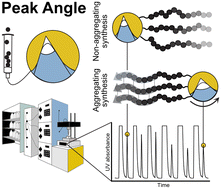
React. Chem. Eng., 2024,9, 825-832
https://doi.org/10.1039/D3RE00494E
Responsive CO2 capture: predictive multi-objective optimisation for managing intermittent flue gas and renewable energy supply
A predictive control framework is developed to maximise enhanced weathering reactor CO2 capture rate, whilst simultaneously minimising non-renewable energy consumption.

React. Chem. Eng., 2024,9, 235-250
https://doi.org/10.1039/D3RE00544E
Adaptive mixed variable Bayesian self-optimisation of catalytic reactions
A novel adaptive latent Bayesian optimisation (ALaBO) algorithm accelerates the development of mixed variable catalytic reactions.

React. Chem. Eng., 2024,9, 308-316
https://doi.org/10.1039/D3RE00476G
Hydrogenation of citral and carvone on Pt and PtSn supported metallic catalysts. A comparative study on the regioselectivity and chemoselectivity
Pt and PtSn catalysts supported on oxide and carbonaceous materials have been studied for the regioselective and chemoselective hydrogenation of citral and carvone.
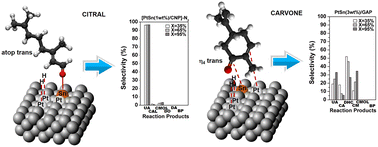
React. Chem. Eng., 2023,8, 3133-3149
https://doi.org/10.1039/D3RE00259D
Optimized design and techno-economic analysis of novel DME production processes
Novel process concepts for DME production based on reactive distillation were proposed and evaluated techno-economically.

React. Chem. Eng., 2023,8, 2826-2840
https://doi.org/10.1039/D3RE00333G
Construction of a hollow MOF with high sedimentation performance and co-immobilization of multiple-enzymes for preparing rare ginsenoside CK
1. Sna&β-G@H-Cu-BDC biocomposite was synthesized via the hydrogel-template method with larger size. 2. Sna and β-G were co-immobilized in the hollow Cu-BDC MOF to produce the rare ginsenoside CK with cascade catalysis. 3. The Sna&β-G@H-Cu-BDC biocomposite has good sedimentation performance.

React. Chem. Eng., 2023,8, 2804-2817
https://doi.org/10.1039/D3RE00294B
Unravelling catalytic activity trends in ceria surfaces toward the oxygen reduction and water oxidation reactions
Different facets of ceria exhibit activities for the entire spectrum of oxygen electrochemistry.

React. Chem. Eng., 2023,8, 1285-1293
https://doi.org/10.1039/D3RE00027C
Electrodeposition of activated carbon on Ni foam for monolithic catalysts and intensification of hydrogenation performance in a micropacked bed
Thin and uniform activated carbon coatings were prepared by electrodeposition, and Pd was uniformly distributed on the coatings. The catalysts by electrodeposition have good external mass transfer performance and hydrogenation activity and stability.

React. Chem. Eng., 2023,8, 1023-1031
https://doi.org/10.1039/D2RE00470D
Continuous synthesis of block copolymer nanoparticles via telescoped RAFT solution and dispersion polymerisation in a miniature CSTR cascade
Miniaturised continuous-flow reactors offer an economical and scalable route to explore the synthesis of block copolymers via RAFT mediated polymerisation-induced self-assembly (PISA).
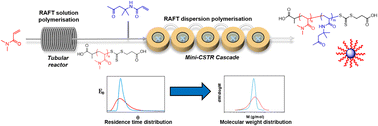
React. Chem. Eng., 2023,8, 707-717
https://doi.org/10.1039/D2RE00475E
Development of a high surface area Cu electrocatalyst for effective nitrous oxide reduction reaction
On a high surface area copper catalyst, electrochemical N2O reduction (N2ORR) with a favorable onset potential and a high N2 partial current density is achieved.
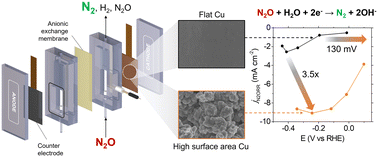
React. Chem. Eng., 2023,8, 84-95
https://doi.org/10.1039/D2RE00249C
Rapid optimisation of API crystallisation in a segmented flow reactor with a continuous, variable temperature gradient
A continuous flow reactor capable of a continuous, variable temperature gradient allows for the rapid optimization of reproducible crystallization conditions and control of crystal growth of small organic molecules.
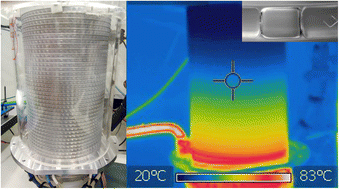
React. Chem. Eng., 2023,8, 77-83
https://doi.org/10.1039/D2RE00183G
Enhanced flow synthesis of small molecules by in-line integration of sequential catalysis and benchtop twin-column continuous chromatography
In-line integration of sequential catalysis and continuous multi-column purification. Adapted for small compound amounts (hit-to-lead). Suitable for large-scale purification (process chemistry).
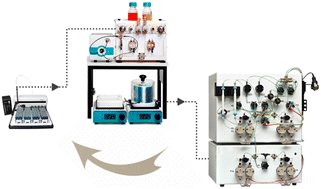
React. Chem. Eng., 2022,7, 2650-2658
https://doi.org/10.1039/D2RE00242F
Synthesis of poly(2,6-diaminopyridine) using a rotating packed bed toward efficient production of polypyrrole-derived electrocatalysts
A straightforward and controllable synthesis method based on a high gravity rotating packed bed reactor is highly favored to efficiently manipulate the structural and electronic properties of polypyrrole-derived electrocatalysts.
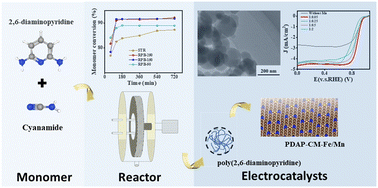
React. Chem. Eng., 2022,7, 2611-2617
https://doi.org/10.1039/D2RE00296E
Selective formation of propan-1-ol from propylene via a chemical looping approach
A novel chemical looping approach for propan-1-ol production from propylene.

React. Chem. Eng., 2022,7, 2534-2549
https://doi.org/10.1039/D2RE00222A
Autothermal CO2 hydrogenation reactor for renewable natural gas generation: experimental proof-of-concept
94% CO2 conversion and 100% formation selectivity to CH4 are obtained in a laboratory Sabatier reactor with a packed bed, air-cooled configuration, using a commercial Ni catalyst.
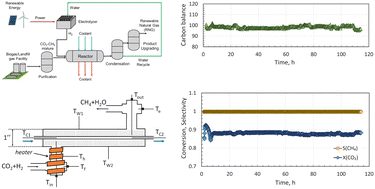
React. Chem. Eng., 2022,7, 2285-2297
https://doi.org/10.1039/D2RE00236A
Structural control in the nanoassembly of the tungsten and molybdenum dithiolene complex analog
A strategy for precisely tuning the self-assembly of tungsten and molybdenum dithiolene complexes to nanoflowers and nanopolyhedra is put forward.

React. Chem. Eng., 2022,7, 2231-2239
https://doi.org/10.1039/D2RE00205A
Catalytic co-pyrolysis of LDPE and PET with HZSM-5, H-beta, and HY: experiments and kinetic modelling
This study determines interaction effects and conducts kinetic modeling for catalytic co-pyrolysis of LDPE and PET with multiple zeolite frameworks.
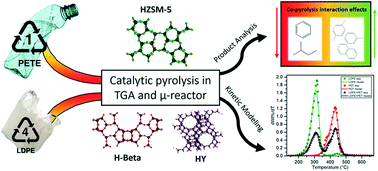
React. Chem. Eng., 2022,7, 2175-2191
https://doi.org/10.1039/D2RE00144F
Homogeneous catalyst modifier for alkyne semi-hydrogenation: systematic screening in an automated flow reactor and computational study on mechanisms
21 types of modifiers are screened for palladium catalysed semi-hydrogenation of alkynes with varying catalyst type, reaction time, and target substrate using an automated flow reactor system.
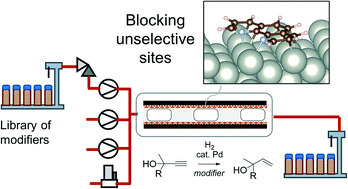
React. Chem. Eng., 2022,7, 1818-1826
https://doi.org/10.1039/D2RE00147K
Microwave-promoted continuous flow synthesis of thermoplastic polyurethane–silver nanocomposites and their antimicrobial performance
The present study reports a reducing agent-free continuous manufacturing of ∼5 nm silver nanoparticles in a thermoplastic polyurethane matrix using a microwave-promoted fluidic system.
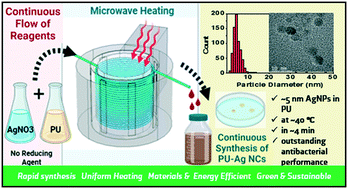
React. Chem. Eng., 2022,7, 1510-1524
https://doi.org/10.1039/D2RE00049K
Chemically-informed data-driven optimization (ChIDDO): leveraging physical models and Bayesian learning to accelerate chemical research
A method combining information from both experiments and physics-based models is used to improve experimental Bayesian optimization.

React. Chem. Eng., 2022,7, 855-865
https://doi.org/10.1039/D2RE00005A
Effect of reaction conditions on the hydrogenolysis of polypropylene and polyethylene into gas and liquid alkanes
Hydrogenolysis of polypropylene and polyethylene provides a pathway to smaller hydrocarbons. We describe the impact of the polyolefin structure, reaction conditions, and presence of chlorine on the product distribution and branching degree.
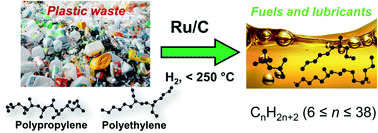
React. Chem. Eng., 2022,7, 844-854
https://doi.org/10.1039/D1RE00431J
Experimental investigations and model-based optimization of CZZ/H-FER 20 bed compositions for the direct synthesis of DME from CO2-rich syngas
Kinetic investigations and model-based optimization of CuO/ZnO/ZrO2 : H-FER 20 catalytic systems for direct DME synthesis from CO2-rich syngas.

React. Chem. Eng., 2022,7, 943-956
https://doi.org/10.1039/D1RE00470K
Topology optimization of a packed bed microreactor involving pressure driven non-Newtonian fluids
Multivariable optimization is an important task for a microreactor to operate with better control and efficacy.
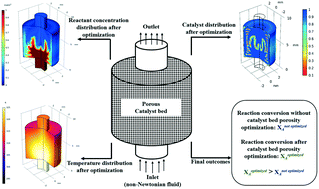
React. Chem. Eng., 2022,7, 609-618
https://doi.org/10.1039/D1RE00310K
Microfluidic fabrication of hydrogel microparticles with MOF-armoured multi-enzymes for cascade biocatalytic reactions
Uniform hydrogel microparticles with ZIF-8 nanoparticles for molecular co-confinement of cascade enzymes are developed by microfluidics to achieve enhanced stability and reusability under harsh conditions.
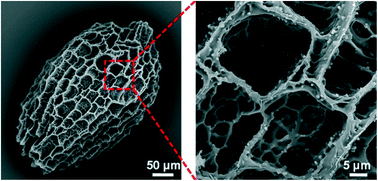
React. Chem. Eng., 2022,7, 275-283
https://doi.org/10.1039/D1RE00257K
Tracing the reactivity of single atom alloys for ethanol dehydrogenation using ab initio simulations
A full DFT parameterized MKM is used to accurately predict the reactivity trend for ethanol dehydrogenation reaction on SAAs.
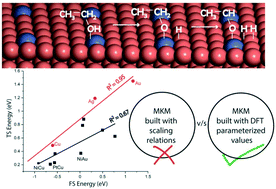
React. Chem. Eng., 2022,7, 61-75
https://doi.org/10.1039/D1RE00396H
DFT study of phenol alkylation with propylene on H-BEA in the absence and presence of water
Water reduces the activation barrier of the rate-limiting step of phenol alkylation with propylene in H-BEA. This, in turn, increases the transition-state theory rate coefficient by two orders-of-magnitude, suggesting much faster alkylation.
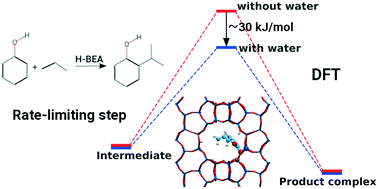
React. Chem. Eng., 2021,6, 2315-2326
https://doi.org/10.1039/D1RE00201E
An activated carbon fiber supported Fe2O3@bismuth carbonate heterojunction for enhanced visible light degradation of emerging pharmaceutical pollutants
The developed Fe2O3@BC heterojunction photocatalyst supported over activated carbon fiber exhibited efficient photocatalytic activity for degradation of antipyrine under visible light irradiation.
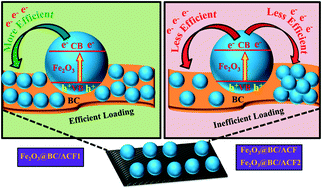
React. Chem. Eng., 2021,6, 2029-2041
https://doi.org/10.1039/D1RE00250C
α-Oxygenation of N-aryl/alkyl heterocyclic compounds via ruthenium photocatalysis
We herein report ruthenium(III) photocatalyzed oxidation of N-aryl tertiary amines to the corresponding amides.

React. Chem. Eng., 2021,6, 2087-2091
https://doi.org/10.1039/D1RE00200G
Kinetics of furfural electrochemical hydrogenation and hydrogenolysis in acidic media on copper
This article reports the competing kinetics and insights into the mechanisms of the electrochemical hydrogenation and hydrogenolysis of furfural to furfuryl alcohol and 2-methylfuran.
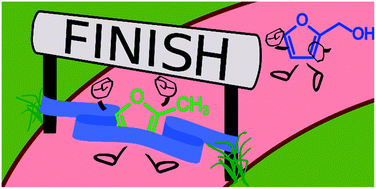
React. Chem. Eng., 2021,6, 2075-2086
https://doi.org/10.1039/D1RE00216C
Framework of the kinetic analysis of O2-dependent oxidative biocatalysts for reaction intensification
A framework for kinetic modelling and evaluation of the reaction intensification of O2-dependent enzyme catalyzed reactions is built from measurements of consumption rates of the initially dissolved O2 in homogeneous liquid phase.
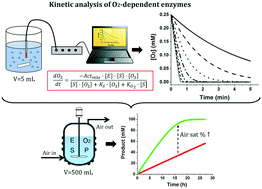
React. Chem. Eng., 2021,6, 2058-2074
https://doi.org/10.1039/D1RE00237F
Surface engineering of a Cu-based heterogeneous catalyst for efficient azide–alkyne click cycloaddition
Atomic-scale engineering of the copper active sites tunes the material performance in the regioselective synthesis of triazoles.
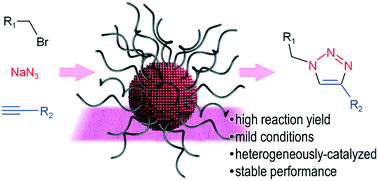
React. Chem. Eng., 2021,6, 1878-1883
https://doi.org/10.1039/D1RE00199J
Engineering aspects of FlowNMR spectroscopy setups for online analysis of solution-phase processes
In this article we review some fundamental engineering concepts and evaluate components and materials required to assemble and operate safe and effective FlowNMR setups that reliably generate meaningful results.
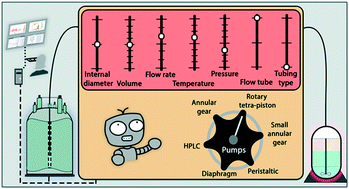
React. Chem. Eng., 2021,6, 1548-1573
https://doi.org/10.1039/D1RE00217A